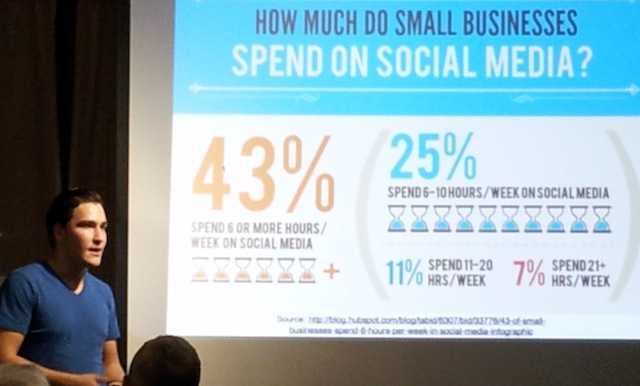
Startups are inherently challenging. Armed with a million-dollar idea, entrepreneurs far and wide wear many different hats, face stiff competition, and try and bootstrap their way to success. With anywhere from 30% to 75% of startups failing the margin for error is miniscule.
Keeping the following targeting lessons in mind is critical to avoiding startup failure.
1. Properly identify your target audience
It sounds simple enough, right? You have to know who your customer is in order to succeed.
Shockingly, some startups don’t know who their target audience actually is. They incorrectly assume, for example, that because they are developing the next big mobile app that everyone with a smartphone constitutes a potential customer. Wrong!
Instead, you need to do plenty of research before launching to ascertain just who the target audience is.
This knowledge should go beyond just demographics (age, sex, education, marital status, etc.) and include psychographic and behavioral information (interests, lifestyles, etc.) customer’s problems and pain points, and much more.
The more complete the picture you have of your customers, the easier it is to both market AND develop a product or service that fills a need.
While this is easy in theory, gathering accurate customer data and building a customer persona can be hard, if not near impossible, in some cases.
Nonetheless, there are many ways to glean this information including analytics, surveys, sales data and others.
No matter how you get the information, completing this first step will make or break your startup.
2. Accept that you won’t appeal to everyone
After obtaining a clear understanding of who your customer is, the next step may be the most difficult.
You must accept the fact that your product or service is not intended for everyone.
It’s one thing to understand this and something totally different to accept and apply this. It means that you may have to ignore, at least in the short term, segments that are profitable but have lower margins or a smaller market size.
With limited resources and an imperative to recoup investment quickly, you must be entirely focused on the most profitable segment with critical mass.
By focusing on the proper segment, not only do chances of survival go way up, but the resources and effort required to market the product are also made easier.
Rather than creating multiple messages tailored to various segments, you can more effectively reach the people most likely to become customers. This efficiency also will free up time to retain customers and help them become brand evangelists, since retaining a customer is far cheaper than acquiring one.
3. Leverage existing audiences
After identifying and accepting a target audience, you can begin to reach out to potential customers where they already exist.
One of the biggest startup marketing mistakes is the assumption that you must create a brand new audience.
While this is true in the sense that you must introduce your brand, it is incorrect to presume that there are no customers who might already exist in communities that would be interested in your product or service.
For example, an app such as the well-known Shazam could be marketed to existing groups of music lovers.
While any startup will still have to invest in brand building, tapping into the segments of people who have similar or complementary interests will go a long way toward success.
Doing so will both reduce the upfront effort required to market the product and the long term efforts. Long term efforts should be reduced through word of mouth marketing and the inherent virility of such groups.
If your product or service adequately solves a need or problem, then it is almost guaranteed to spread throughout the group and most likely jump to others naturally with little or no effort on your part apart from the initial seeding.
You should spend a great deal of time even before launch figuring out if these groups exist, where they exist, and if they are a good match.
While marketing and building your startup’s brand will still be a difficult task, leveraging existing tribes should increase the odds of success.
Conclusion
In a fiercely competitive landscape, seeking both customers and capital, you can’t afford to ignore the basics.
Don’t brush aside these basics and naively think that the product or design itself will sell.
Do the legwork to identify a profitable segment, focus on it, and tap into existing groups to help propel your startup to positive cash flow and long-term growth.
Your turn
How do you go about identifying your target audience? Let us know in the comments!


